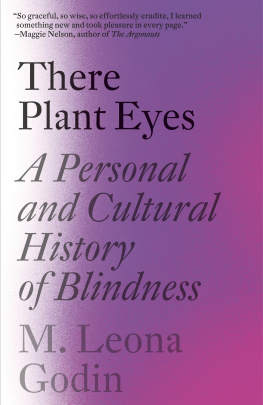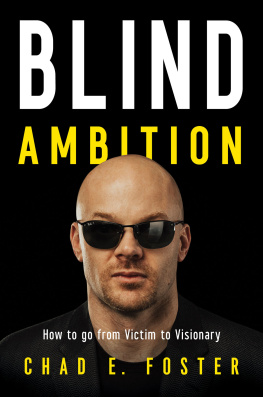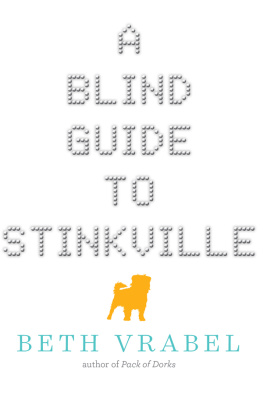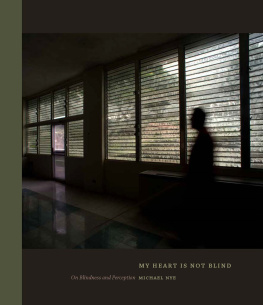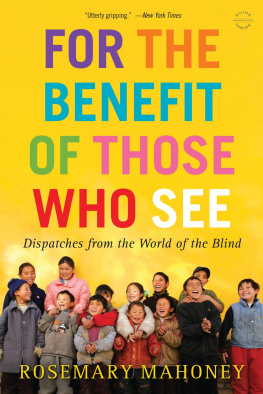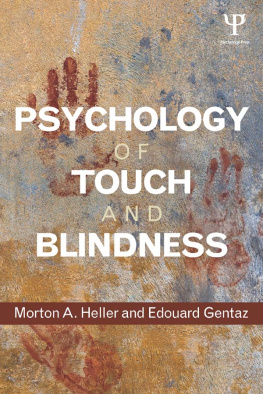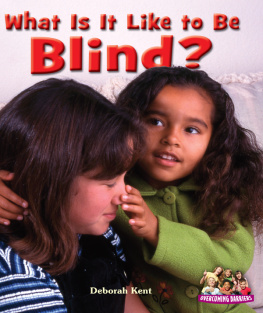The Making of Blind Men
The Making of Blind Men
A Study of Adult Socialization
Robert A. Scott
To my father
First published 1969 by Transaction Publishers
First paperback edition 1981 by Transaction, Inc.
Published 2017 by Routledge
2 Park Square, Milton Park, Abingdon, Oxon OX14 4RN
711 Third Avenue, New York, NY 10017, USA
Routledge is an imprint of the Taylor & Francis Group, an informa business
Copyright 1969 Russell Sage Foundation, 230 Park Avenue, New York City, New York 10017.
This study was originally supported by Russell Sage Foundation.
All rights reserved. No part of this book may be reprinted or reproduced or utilised in any form or by any electronic, mechanical, or other means, now known or hereafter invented, including photocopying and recording, or in any information storage or retrieval system, without permission in writing from the publishers.
Notice:
Product or corporate names may be trademarks or registered trademarks, and are used only for identification and explanation without intent to infringe.
Library of Congress Catalog Number: 80-20558
Library of Congress Cataloging-in-Publication Data
Scott, Robert A 1935-
The making of blind men.
Reprint of the 1969 ed. published by Russell Sage Foundation, New York.
Bibliography: p.
Includes index.
1. BlindRehabilitationUnited States. 2. BlindUnited States-Psychology. 3. BlindnessUnited StatesPsychological aspects. 4. Socialization. 5. BlindServices forUnited StatesEvaluation. I. Title.
[HV1795.S36 1981] 305 80-20558
ISBN 0-87855-687-7
ISBN 13: 978-0-87855-687-8 (pbk)
PERUSAL OF the literature in the field of services to blind and visually-impaired persons will yield no book more intensive or bound to be more controversial than this. I believe that Dr. Scotts sensitive negativism of the work being carried out by the so-called blind agencies is emphasized for effecthopefully, upon the officers and administrative and supervisory staffs of all agencies, public and private, large and small, specialized or multi-faceted. A critical open-minded review of this book by those who are responsible for the quality of services to blind persons today will leave no one guilt free. The pertinent questions posed by Dr. Scotts observations require serious evaluation by each of us. In view of the sociological system of making blind men (can one categorically deny it?), these questions must be asked by each agency: How have we actually contributed to this system? How do we see it affecting our future role?
I earnestly hope that the thinking members from the field and the academicians will look at this book through the eyes of a social scientist whose objective was to shock blind agencies out of their lethargic, accommodative approaches and toward a new outlook for brighter, clearer, and more realistic services for the blind. Throughout this nation and Canada there is a new emphasis upon sound, responsible programs of multiple services geared to meet the requirements of each blind individual for the maximum development of his talents and desired objectives as an independent person in society.
This new focus upon the development of the individual has required responsible persons in some agencies to seek the talents and experiences of professionally trained people who have, as their major objective in life, service to their fellow men.
More and more questions are being raised within the field of services to blind persons: What can we do to build upon the past? How can we more effectively help each individual blind person by providing more quality services for his individual good? In some agencies there is already a movement away from the status quo, one which holds great promise for the future of blind and visually-impaired persons. Through their example, change for the betterment of service, not complacency with the old, is now in vogue. The continuing development of new approaches to service, new systems, skills, and techniques, which are based upon applied and clinical research, will dispel the bleak picture portrayed in this sophisticated text.
Those who have been concerned with other fields of serving handicapped persons can readily see that the observations and conclusions of Dr. Scott are not unique to the field of blindness. Nevertheless, it is important that we capitalize upon his critical review in order that we recognize the individual differences among the blind and visually-impaired persons, and gear our services, individually and collectively, to meet their needs. There has been a longstanding need for a treatise such as this, which is a most natural collateral to the self-evaluation guides produced by the National Accreditation Council for Agencies Serving Blind and Visually-Handicapped Persons. This book should produce one of the most thought-provoking, self-analytical exercises yet known to our field. Therefore, its contribution may be not only the thoughts that it contains, but also the thoughts that it provokes.
WESLEY D. SPRAGUE
New York City
October, 1968
IT IS with a special sense of personal satisfaction that I welcome this addition to Russell Sage Foundation publications. During part of the time that the author, Dr. Robert A. Scott, was engaged in his research, he was a resident study director in the offices of the Foundation, and so I was able to see this work grow, take shape, come to maturity, and to appreciate the ways in which the author moved to solve the unusual practical and intellectual challenges of the research.
William M. Robbins, President of the Board of Trustees of the New York Association for the Blind, and the late Alan W. Sherman, then Executive Director of the Association, asked Russell Sage Foundation to participate in a jointly-sponsored study of current services for the blind in the United States, with special reference to the contributions the social sciences might make in understanding and improving the services. It was understood that the Association would be an important, but not the only, major institution providing services for the blind that would come under review, and that the conclusions of the proposed study would certainly be useful to those responsible for the program at the Association in planning new ventures. The foresight and initiative demonstrated by Mr. Robbins and Mr. Sherman in conceiving the study was equaled by the Associations exceptional candor and cooperation throughout the course of the study.
In other years, Russell Sage Foundation has supported similar studies in cooperation with the Jewish Family Service, the Family Service Association of America, the Child Welfare League of America, the Child Study Association of America, and other major health and welfare organizations. These studies were directed toward improving the utilization of social science theory and knowledge in the day-to-day operations of these institutions. Accordingly, the Foundation welcomed the opportunity to work with the New York Association for the Blind in the important area of services for the blind. Both sponsoring parties were happy to avail themselves of Dr. Scotts services to direct this study.
This study is a powerful case analysis of a major human disability, of a set of welfare institutions designed to meet this disability. It also presents basic social science information that can be brought to bear on understanding the disability and the institutions procedures. The key to Dr. Scotts study is given at the outset:


